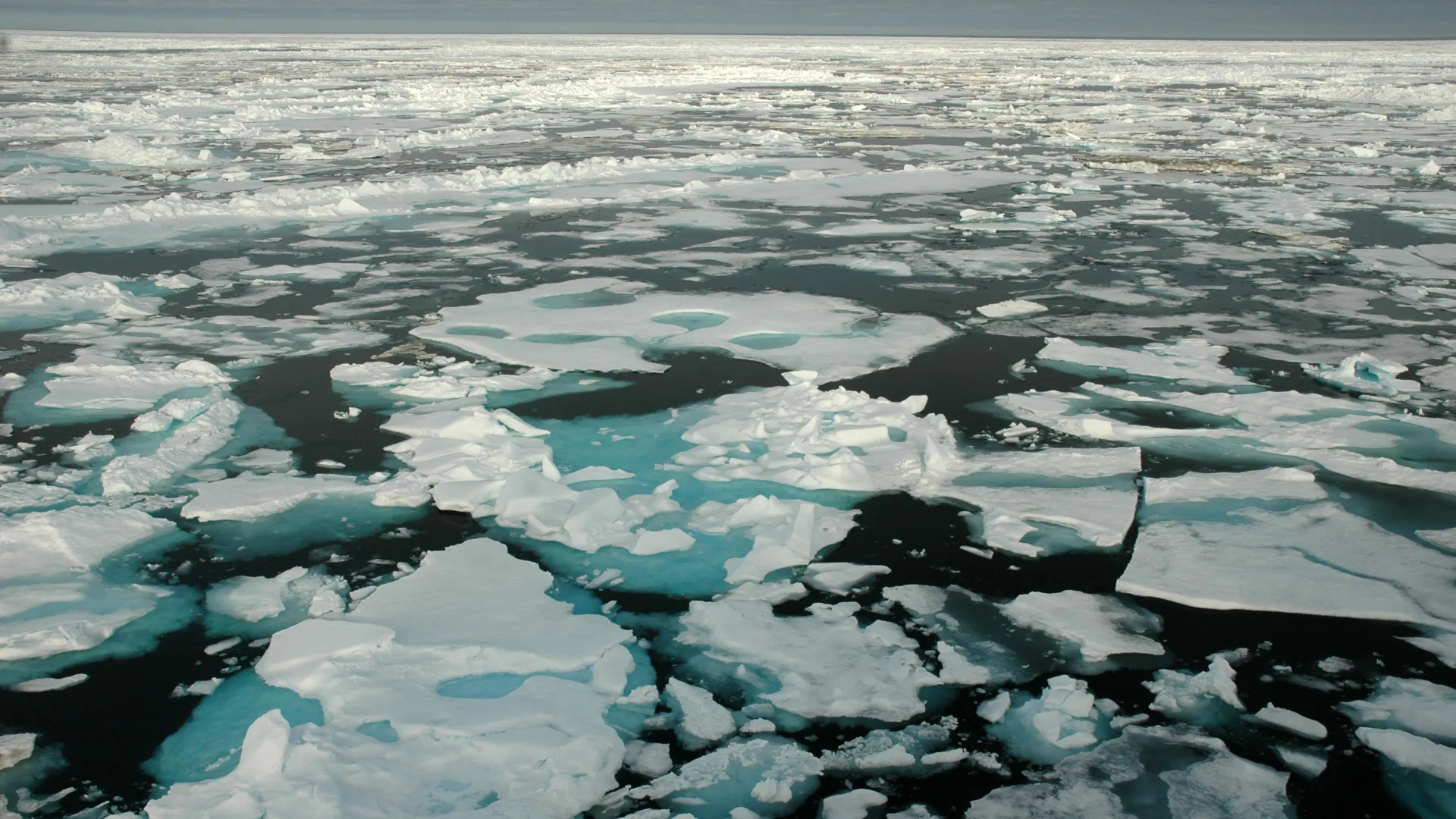Space dust reveals how fast the Arctic is changing
- Date:
- November 13, 2025
- Source:
- University of Washington
- Summary:
- Arctic sea ice is disappearing fast, and scientists have turned to an unexpected cosmic clue—space dust—to uncover how ice has changed over tens of thousands of years. By tracking helium-3–bearing dust trapped (or blocked) by ancient ice, researchers built a remarkably detailed history of Arctic coverage stretching back 30,000 years. Their findings reveal powerful links between sea ice, nutrient availability, and the Arctic food web, offering hints about how future warming may reshape everything from plankton blooms to geopolitics.
- Share:

Arctic sea ice has shrunk by more than 42% since 1979, when satellites first began providing consistent measurements. As the remaining ice thins and retreats, more open ocean is left exposed to sunlight. Ice helps cool the planet by reflecting sunlight, but darker seawater absorbs heat instead, which speeds up warming and contributes to even greater ice loss. Climate projections suggest the Arctic could experience ice-free summers within the next few decades, and scientists are still working to understand how this shift might affect ecosystems and human societies.
For many years, scientists have known that fine particles from space steadily fall to Earth and accumulate in ocean sediments. A study published on November 6 in Science shows that identifying where this cosmic dust appears, and where it is missing, offers clues about how sea ice coverage has changed over thousands of years.
"If we can project the timing and spatial patterns of ice coverage decline in the future, it will help us understand warming, predict changes to food webs and fishing, and prepare for geopolitical shifts," said Frankie Pavia, a UW assistant professor of oceanography who led the research.
How Cosmic Dust Helps Track Ancient Ice
Cosmic dust forms when stars explode or when comets break apart, and much of it carries a rare version of helium called helium-3 after passing near the sun. Researchers measure helium-3 to separate cosmic dust from material originating on Earth.
"It's like looking for a needle in a haystack," Pavia said. "You've got this small amount of cosmic dust raining down everywhere, but you've also got Earth sediments accumulating pretty fast."
In this project, however, Pavia focused more on places where the dust did not show up.
"During the last ice age, there was almost no cosmic dust in the Arctic sediments," he said.
Reconstructing 30,000 Years of Arctic Sea Ice
The team proposed that cosmic dust could serve as a stand-in for satellite measurements of ice. When the sea surface is covered with ice, the dust cannot settle on the seafloor, but open water allows it to reach the sediment. By measuring the amount of cosmic dust in sediment cores collected from three Arctic locations, the researchers recreated sea ice history over the past 30,000 years.
The three study sites "span a gradient of modern ice coverage," Pavia said. One site near the North Pole remains ice-covered throughout the year. A second sits near the seasonal edge of the ice in September, and the third was consistently ice-covered in 1980 but now experiences periodic ice-free conditions.
The team found that times of persistent ice cover matched periods with very little cosmic dust in the sediments. This was true during the last ice age about 20,000 years ago. As the planet warmed afterward, cosmic dust began to appear again in the sediment samples.
Linking Ice Changes to Nutrient Use
The researchers also compared their reconstructed ice record with data on nutrient availability. They discovered that nutrient consumption was highest when sea ice levels were low and declined as ice cover increased.
Nutrient cycling data comes from tiny shells once inhabited by foraminifera, organisms that digest nitrogen. Chemical signatures preserved in their shells reveal how much of the available nutrients these organisms used while they were alive.
"As ice decreases in the future, we expect to see increased consumption of nutrients by phytoplankton in the Arctic, which has consequences for the food web," Pavia said.
What Drives Shifts in Nutrients?
More work is needed to understand why nutrient use changes as ice declines. One possibility is that less ice leads to more photosynthesis at the surface, increasing nutrient uptake. Another idea suggests that melting ice dilutes nutrient concentrations in the water.
Both ideas could appear as higher nutrient consumption, but only the first would signal a rise in marine productivity.
Additional co-authors include Jesse R. Farmer at the University of Massachusetts Boston; Laura Gemery and Thomas M. Cronin at the United States Geological Survey; and Jonathan Treffkorn and Kenneth A. Farley at Caltech.
This research was supported by the National Science Foundation and a Foster and Coco Stanback Postdoctoral Fellowship.
Story Source:
Materials provided by University of Washington. Note: Content may be edited for style and length.
Journal Reference:
- Frank J. Pavia, Jesse R. Farmer, Laura Gemery, Thomas M. Cronin, Jonathan Treffkorn, Kenneth A. Farley. Cosmic dust reveals dynamic shifts in central Arctic sea-ice coverage over the past 30,000 years. Science, 2025; 390 (6773): 628 DOI: 10.1126/science.adv5767
Cite This Page: